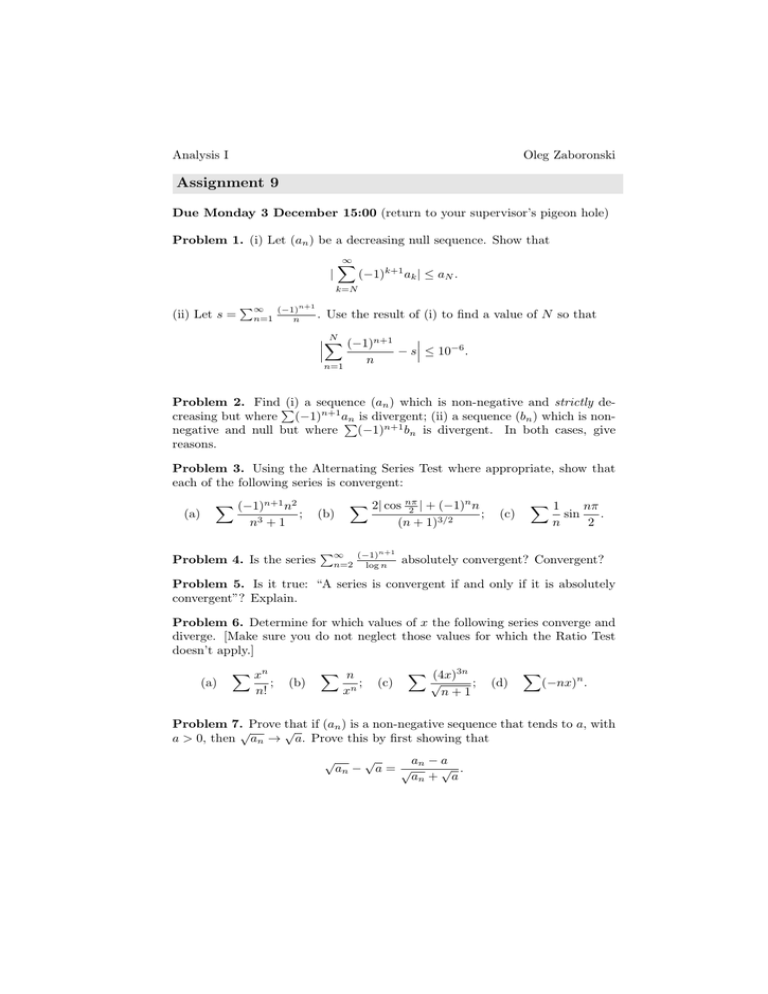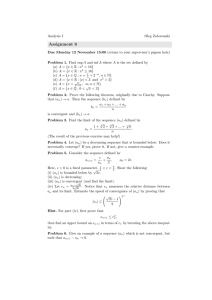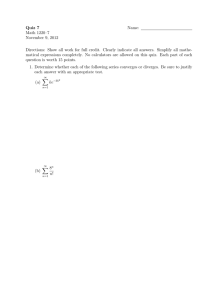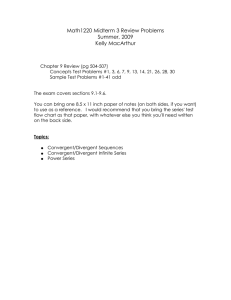Assignment 9
advertisement

Analysis I Oleg Zaboronski Assignment 9 Due Monday 3 December 15:00 (return to your supervisor’s pigeon hole) Problem 1. (i) Let (an ) be a decreasing null sequence. Show that ∞ ∑ | (−1)k+1 ak | ≤ aN . k=N (ii) Let s = ∑∞ n=1 (−1)n+1 . n Use the result of (i) to find a value of N so that N ∑ (−1)n+1 − s ≤ 10−6 . n n=1 Problem 2. Find ∑ (i) a sequence (an ) which is non-negative and strictly decreasing but where (−1)n+1 a∑ n is divergent; (ii) a sequence (bn ) which is nonnegative and null but where (−1)n+1 bn is divergent. In both cases, give reasons. Problem 3. Using the Alternating Series Test where appropriate, show that each of the following series is convergent: (a) ∑ (−1)n+1 n2 n3 +1 ; Problem 4. Is the series ∑ 2| cos nπ | + (−1)n n 2 (b) (n + ∑∞ n=2 (−1)n+1 log n 1)3/2 ; (c) ∑1 nπ sin . n 2 absolutely convergent? Convergent? Problem 5. Is it true: “A series is convergent if and only if it is absolutely convergent”? Explain. Problem 6. Determine for which values of x the following series converge and diverge. [Make sure you do not neglect those values for which the Ratio Test doesn’t apply.] (a) ∑ xn n! ; (b) ∑ n ; xn (c) ∑ (4x)3n √ ; n+1 (d) ∑ (−nx)n . Problem 7. Prove that √ if (an ) is a non-negative sequence that tends to a, with √ a > 0, then an → a. Prove this by first showing that √ an − √ a= √ an − a √ . an + a



